How heat and food bring people together, looking at the relationship between ovens and kitchens…
The origins of the kitchen
In ancient times, people cooked on open fires that were built outside on the ground. Later on, simple masonry constructions were used to hold the wood and food. In the Middle Ages the food was often placed in metal cauldrons that were hanging above the fire. These cooking areas naturally caused people to gather as they were the primary source of heat, light, safety and, of course, food.
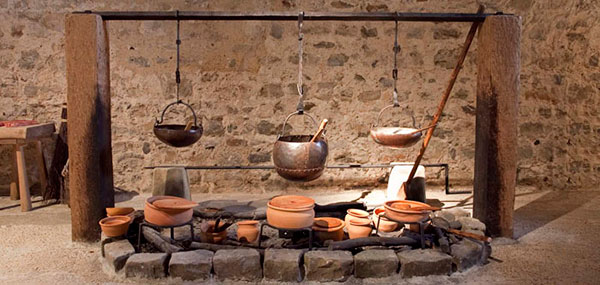
A recreated 12th-Century kitchen, Dover Castle, English Heritage
The smoke and soot created from the fires were a huge problem until the 16th century, when chimneys became widely used in homes. With a chimney, smoke was drawn up and out of the great hall, making it easier to breath and easier to create large cooking fires in fireplaces.
The development of stoves
Economic trends and politics had a major influence on the design and function of the kitchen. Technological advancements were constant, most of which aimed to reduce labor and time. In the 18th Century, the stoves were fueled by wood. One of the earliest wood-burning kitchen stoves was the Stew Stove or Castrol Stove, developed in 1735 by the French designer Francois Cuvilliés.
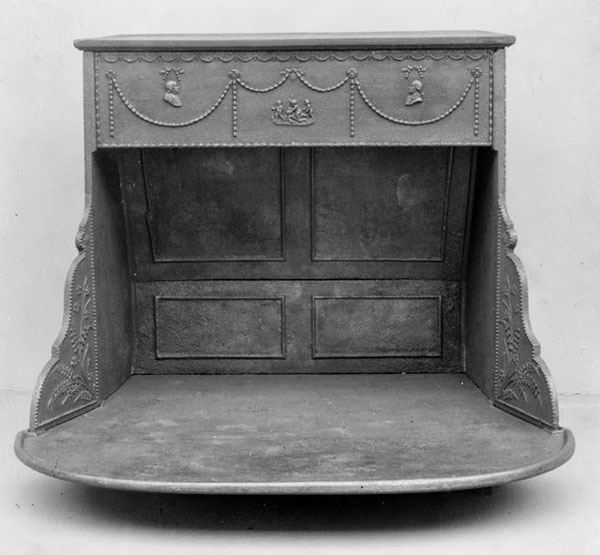
A Franklin Stove. (ca. 1795) Metropolitan Museum
Metal stoves came into use in the 18th century. An early and famous example of a metal stove is the Franklin stove, invented by Benjamin Franklin in 1742. It had a labyrinthian path for hot exhaust gases to escape, allowing heat to enter the room instead of going up the chimney. However, this stove was designed only for heating, not for cooking.
The industrial revolution encouraged new inventions, cheaper prices, and new ways of economic and ergonomic efficiency. The most common stove for heating in the industrial world for almost a century and a half was the coal-burning. Coal stoves came in all sizes and shapes and different operating principles. Since coal burns at a much higher temperature than wood, coal stoves needed to be constructed to withstand the high heat levels.
The Oberlin Stove
In 1834, Philo Stewart designed a compact, wood-burning cast-iron stove: the Oberlin Stove. It was a metal kitchen stove small enough for domestic use, much more efficient than cooking in a fireplace, since it increased heating capacity and enabled record cooking times. It became a huge commercial success; it could be cast into decorative shapes and forms and could easily withstand temperature swings from hot to cold. These iron stoves evolved into specialized cooking appliances with flue pipes connected to the chimney, oven holes, and installations for heating water.
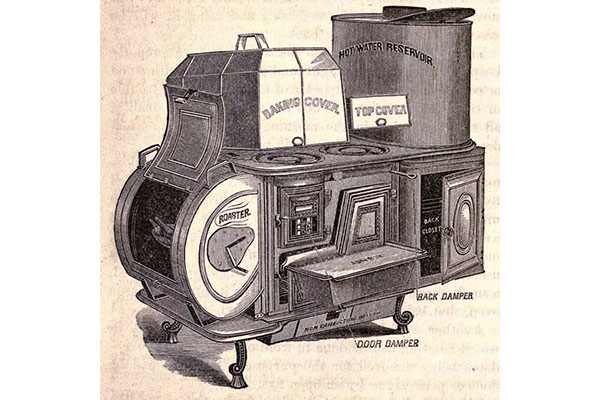
Oberlin Stove, 1869, Photo in “Beecher and Beecher Stowe, The American Woman’s Home”
The move to gas stoves
Concerns about air pollution, deforestation and climate change caused a decline in coal stoves. Gas became the preferred source of heat, allowing ovens to become smaller and lighter. The British inventor James Sharp patented the gas stove in 1826. By the 1920s, gas ovens were used in most domestic kitchens.
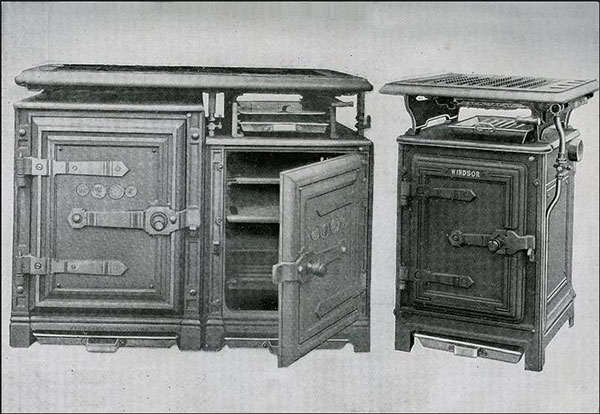
Gas Stove, Windsor, 1851, from “Mrs Beeton’s Book of Household Management”, 1904
The rise of the electric oven
Between the 1920’s and 1930’s the electric oven began to compete against the gas oven. The Copeman Electric Stove Company, based in Michigan, received the first patent for an electric stove in 1912.
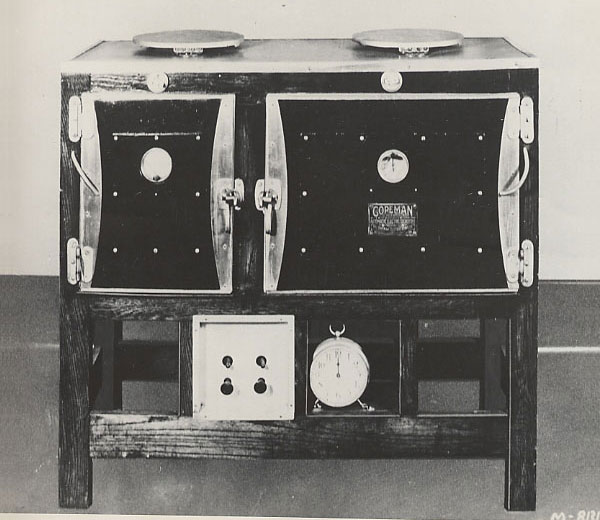
Copeman Electric Stove, 1912, Mostly wood, it had two ovens, top units, automatic timer (see clock) and heat control
The development of the modern kitchen, Post World War II onwards
The housing boom and manufacturing advancements of post-World War II made a huge impact on the “modern” kitchen. There was an increased demand for kitchen technology and equipment that inspired homeowners to tear down the walls that once hid their utilitarian kitchens. The kitchen was becoming quieter, cleaner, better organized and easier to work in; a source of pride, and slowly a place worthy of entertaining guests.
In the 1960’s and 1970’s other social changes were taking place that improved the style of the kitchen. A renewed interest in home cooking, fetishizing kitchen utensils and entertaining meant that life was happening, once again, in the kitchen. The kitchen became a source for improving culinary skills, displaying designer cookware and becoming the heart for social activity. By the 1980’s, the idea of a completely open kitchen, with appliances designed to show off, came into being.
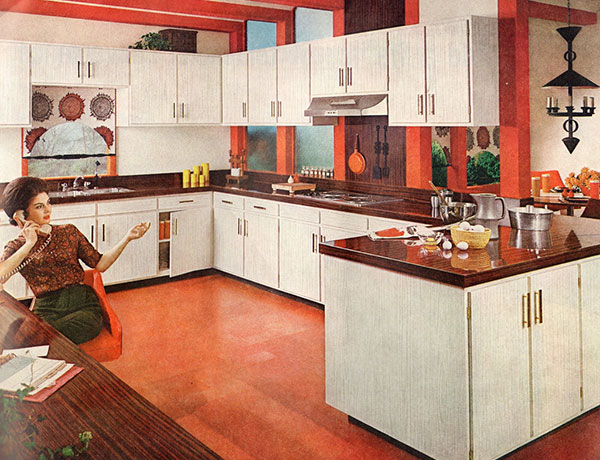
A kitchen from the 1960’s, author unknown, Veterans United
Contemporary kitchens
Ovens today are more time, health and energy efficient. Our appliances are finally catching up with our fast-paced, demanding lifestyles. Speed ovens cut the time of cooking in half, which saves the amount of energy used during the cooking process. The kitchen doesn’t look like the kitchen, in the traditional sense. It’s now a clean space, with a full range of sleek appliances looking towards a sustainable future.
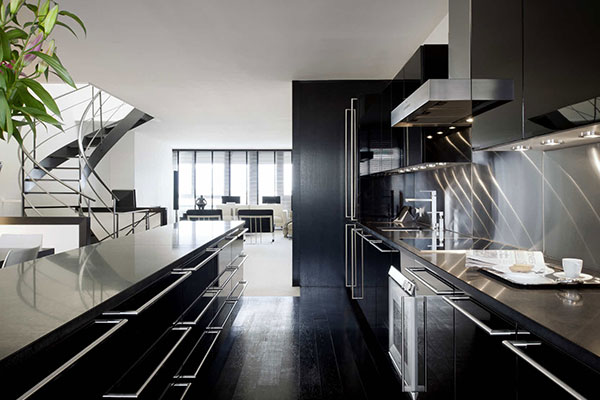
Contemporary kitchen in a Geneva apartment by Poggenpohl